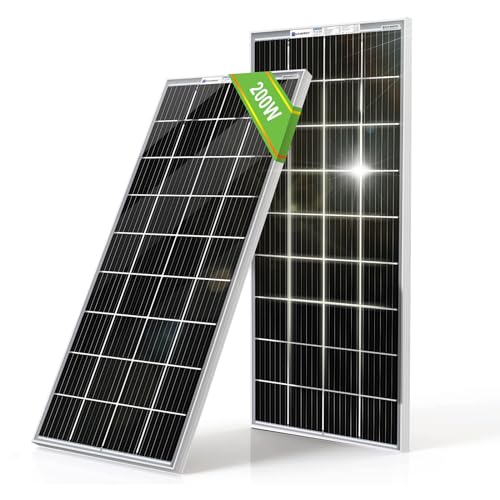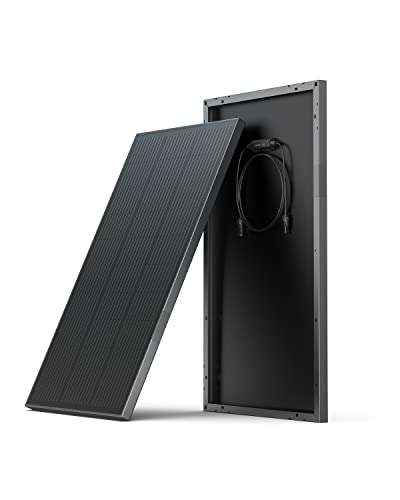Picking the right solar panels might seem tricky, but it doesn’t have to be. Start by checking your energy needs. Think about how much electricity your home usually uses. This will help you figure out how many panels you'll need. If you use a lot of power, you’ll want panels that produce more energy. Simple as that!
Next, consider the efficiency of the panels you're looking at. Higher efficiency panels generate more power in less space. If your roof isn’t super big, you’ll want the most efficient options. Look for panels with good efficiency ratings. It makes a big difference, especially when you’re thinking about installing solar panels on roof space where every inch counts.
Don’t forget about warranty and durability. Solar panels are a long-term investment, so they need to stand up against the elements. A solid warranty means peace of mind, so check how long the manufacturer guarantees their product. A warranty of 25 years is pretty standard, but you’ll want to get the details.
Finally, compare prices and do some research on different brands. You want something that's not only reliable but also fits your budget. Some panels might look tempting because of their low price, but make sure you’re not sacrificing quality. Quality panels will save you money in the long run with better performance.
Preparing Your Roof for Installation
Getting your roof ready for installing solar panels is super important and pretty straightforward. You want to make sure everything's in tip-top shape to get the best performance from your new system. Here’s what you need to consider before diving into the installation process.
First up, check the condition of your roof. Look for any damaged shingles, leaks, or structural issues. If your roof has seen better days, it might be a good idea to patch things up or even replace it before you start installing solar panels on roof. A solid base is crucial for ensuring your panels stay secure and function well.
Next, think about your roof type. Not all roofs are the same, and some surfaces are better for solar panels than others. Asphalt shingles, metal roofs, and flat roofs all have their pros and cons. If you have any doubts, a good installer can help you figure out what works best for your structure.
Also, consider the orientation and pitch of your roof. South-facing roofs usually catch the most sunlight, which can maximize your energy production. If your roof slopes in a different direction, it might still work, but it could affect how efficient your solar panels are. Talking with a pro during the planning stage can help you get the most out of your setup.
Lastly, clear any obstructions. Trim back tree branches and remove anything that could shade your panels. You want to make sure they get as much sun as possible. By taking these steps, you’ll be all set for installing solar panels on roof and enjoying those benefits in no time!
Litime 500A Battery Monitor for Solar Panels
Keep track of your solar battery health and performance with this easy-to-use monitor
Product information
$59.99
Product Review Score
4.11 out of 5 stars
167 reviewsProduct links
Step by Step Installation Process
Installing solar panels on your roof might sound complicated, but it’s actually pretty straightforward once you break it down into steps. Let’s walk through the process together!
First things first, you’ll want to gather your materials and tools. Here’s what you need:
Next, start by assessing your roof. Make sure it’s in good shape and gets plenty of sunlight throughout the day. You want maximum exposure for your solar panels. Once you’ve picked the best spot, it’s time to install the mounting brackets. Attach these securely to your roof using the drill. These brackets will hold your solar panels in place.
Now it’s time to get those solar panels up! Carefully attach each panel to the brackets you just installed. Make sure they’re snug and secure. When that’s done, you can start wiring the panels together. It’s key to follow the instructions from the manufacturer here, so you get everything connected properly.
Finally, connect the inverter, which converts the solar power into electricity for your home. Once everything's connected, double-check all your work. Safety first! If all looks good, turn on your system! You’re all set. Enjoy your new solar panels and the savings that come with them!
ECO-WORTHY 100W Bifacial Monocrystalline Solar Panels
Maximize your energy output with these efficient and versatile solar panels that harness sunlight from both sides
Product information
$154.99 $136.99
Product Review Score
4.28 out of 5 stars
179 reviewsProduct links
Maintaining Your Solar Panels After Installation
Once you've finished installing solar panels on your roof, it's important to give them a little TLC every now and then. Keeping your solar panels in great shape ensures they work efficiently and last longer. Don’t worry; maintenance is usually pretty straightforward.
First off, just keep an eye on your panels. Regularly check for dirt, leaves, or any debris that could block sunlight. A quick rinse with water can often do the trick. If you live in a particularly dusty area or near lots of trees, more frequent cleaning might be necessary.
Next, look out for any shading. If plants around your home grow taller or if nearby structures cast shadows on your panels, it could reduce their performance. Trim back any overgrown vegetation as needed to keep those panels soaking up the sun.
It’s also wise to have a professional inspection every year or two. They can spot issues you might miss and ensure everything is working smoothly. This isn't just about maintaining efficiency; it's also about safety. You want to ensure all electrical connections are secure and that your panels aren’t suffering any hidden damage.
Lastly, keep an eye on your energy bills and panel output. If you notice a drop in performance, it could signal a problem. Staying proactive with maintenance after installing solar panels on your roof helps you enjoy the benefits for years to come!






